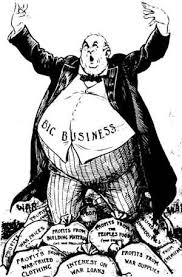 Here are some stats that Most of us already know and most Dealer Principles and GMs may already know. But let’s give it another read because this is important to your business.
Here are some stats that Most of us already know and most Dealer Principles and GMs may already know. But let’s give it another read because this is important to your business.
Not all buyers use the same criteria to choose a dealer or are influenced by the same dealer experience and sales processes.
According to the Foresight Research 2013 Dealership Report, Taken from UCN News, based on a study of 7,543 recent U.S. new car and truck buyers, experience with a brand drives most purchases.
While 17 different automotive marketing communication channels are analyzed in this study, none are more influential to the purchase decisions of new car and truck buyers than the dealership experience with the exception of prior brand experience. Forty-nine percent of all buyers this past year report that their dealership experience was highly influential to their decision to purchase the vehicle they did.Â
The average new-vehicle buyer today is older (nearly half are over age 55). They are also wealthier and experienced with the buying process. Dealer reputation and relationships are key to this group.
Younger buyers (many of them first-time buyers) bring a narrower set of expectations into their buying process. These buyers want and need dealer assistance, but one out of four say their dealership experience took too long.Â
Buyers aged 35-54 (representing 37 percent of current buyers) reflect a mixture of their younger and older counterparts. Like younger buyers, they are very concerned with getting a good price/deal, and financing options. Yet like older buyers, they have high expectations of their dealer experience.
So let’s think about this. This means that the people on the front lines and by this I mean the salespeople, including those in the BDC department, Service Writers, Parts and Body Shop Departments. Now why did I just refer to all these people as salespeople?
Because they all better be. These are the people that are selling you, your services and products and if they don’t know how to sell and how to treat people-your losing a great deal of business.
So why do a lot of you think that you can get these people on the cheap and expect great results. You pay a lot for your marketing and other vendors services and hopefully they are doing the right things.
But these employees I just mentioned are your most valuable asset and you are not going to get or have the right people on the cheap. I showed in one of my last posts a dealer who was paying top dollar and getting top results. These stats just gave me the opportunity to maybe shed more light on my mission to prove my point.
You can hire consultants to train, train and do more training and give people all the tools in the world to do a job but if you don’t have the right people your just wasting your money. And by the way what are your managers doing?
You need consultants who know how to get the right people in right the positions first Which means consultants who have proven themselves on the front lines and in the trenches who can find right people you need. And again, what are your managers doing?
If you need to hire consultants, (And again what are your managers doing), find one who is going to weed out all the non-performers and who is hired by and who is looking out for you the owner and not the management that may be the root of your problems.
A lot of good salespeople and managers have already left the Automotive Industry because the good ones can perform in any Commission Sales Industry and are going where they can be rewarded for their talent.
There are those who would like to commoditize the Industry and have store clerks waiting on people. But I can tell you that if this happens there will no longer be room for the Small and Medium Size Franchise Dealer.
By having the right people you don’t need to train them because they’re professionals and are driven to perform. So if you take all that money you pay to train and get no return from and put the right people (Including Management) on the front lines- you will not only save most of the money you spend on consultants but realize that the ones on the front lines are your real ROI.
By William Cosgrove
 This survey based whitepaper, based on interviews with 229 executives worldwide assesses the challenges and opportunities faced by global businesses as they optimize sales resources to develop territories and incentive compensation plans. This is critical in response to emerging market opportunities and complex global economic challenges.
This survey based whitepaper, based on interviews with 229 executives worldwide assesses the challenges and opportunities faced by global businesses as they optimize sales resources to develop territories and incentive compensation plans. This is critical in response to emerging market opportunities and complex global economic challenges.Download Button
There’s no denying that in sales, talent is a key differentiator. The same goes for pro athletes. The majority of your “A†players are talented. They hold themselves accountable and have the competencies required for success.  However, even the most talented will fail if they're put in the wrong environment. Even the best NFL quarterbacks. Today’s post is about how Sales Ops can create conditions that enable success.
How well have you created conditions for sales success? Find out by downloading the Sales Performance Conditions Scorecard here.
Ultimately, sales success is about making the number. Many variables influence making your revenue goals. Overall strategy, go-to-market model and product suite are essential. So too are having the right talent, structure and head count.
However, without setting up the right performance conditions, revenue goals won’t be met. Specific performance conditions include:
- Sales Process: This is your playbook. Is it aligned with the buyer, adopted in the field and reinforced by your “coaches�
- Territories: The field of play. Are territories designed to maximize growth balanced with efficiency? Are you holding back performance based on territory design and assignment?
- Compensation: Akin to a pro athlete’s salary. Is it competitive and geared to keep your very best? Is it synced with your strategy and driving desired behavior?
- Quotas: Your most important player statistic. Are your quotas attainable and reflective of current performance and market potential?
I’ll illustrate the importance of these conditions using a sports analogy with the NFL.
Aaron Rodgers is a quarterback with the Green Bay Packers. He’s considered by many to be one of the best NFL quarterbacks playing today.  The Packers are also one of the greatest NFL franchises ever.  With the right game plan, coaches, supporting team, trainers and equipment he’ll remain elite.
Huddle Around A Sales Process
What if Rodgers’ receivers and running backs all decide not to follow a scripted play? That’s like having sales reps create their own sales process. Without a huddle and playbook, you get no predictable activity, cadence or alignment. Without a sales process, some of your “A’s†may improvise. However, to raise performance broadly, you need an adopted and repeatable process.
Give Your “A†Players the Best “Fieldâ€
Great quarterbacks use the entire football field. However, their real “patch†– where they maneuver the most - is the backfield. How would Rodgers perform if his “patch†was much worse than competing quarterbacks? If his backfield was filled with gopher holes and boulders, he would fail. Give your very best reps the very worst sales territories and suffer the consequences.
Design territories that are efficient and take untapped opportunity into account. To do this right you have to conduct account segmentation. Update the analysis annually and make adjustments. Assign the highest potential territories to your best reps. They will thank you for it and perform.
Competitive Compensation Aligned to Strategy
Rodgers’ current total pay will average about $19 million per year. Among the highest paid QB’s in the NFL. Consider if Green Bay had a pay policy that capped him at $5 million. Still a good chunk of change but he would opt out. He would get paid more by the competition.Â
If your compensation plans aren’t in line with your competition, you lose talent. Don’t kid yourself – great sales people are like “free agentsâ€. They expect to get paid what they’re worth. Benchmark the market regularly to see if you’re competitive. Reward strong performance.
Incentive pay is a lever that must align with strategy.  Suppose Rodgers was paid an incentive every time he threw an interception. Crazy, right? Well, no different than paying incentives misaligned with your core strategy.  Pay sales well for results that reinforce the strategy of the company. Align the two or you won’t get the desired behavior.
Realistic Quota Setting
Here’s one last parallel to consider regarding quota setting. Assume Rodgers was told to double his pass completions this year to make his incentive. In addition, if Green Bay traded all their best receivers, would Rodgers make his “quota� It would be totally unrealistic to expect him to double his performance. Quotas must be attainable. To set them appropriately requires looking at past performance and opportunity potential.
Setting the right performance conditions for your team is complex. It requires your foresight, analysis and execution. You need support from executive management. It demands a team approach. It’s much more than just making analogies to NFL football. How well have you created the best conditions for sales success? Use our Sales Performance Conditions Scorecard to begin your evaluation.
It’s not too early to start now in preparation for 2014. You could wait but you run the risk of losing your “A†players. You’ll miss the number. Success begins with setting the right performance conditions. Move the ball downfield.
 When you think of sales, do you think of pejoratives such as pushy, sleazy and dishonest? Most people do.
When you think of sales, do you think of pejoratives such as pushy, sleazy and dishonest? Most people do.
Yet in “To Sell Is Human: The Surprising Truth About Moving Others,†Daniel H. Pink contends that most of us, regardless of job title or salary structure, are salespeople.
What?
Sales, broadly defined, means moving people to action, which people must do well to be successful.
This “non-sales selling†doesn’t involve a purchase—it simply means persuading, influencing and convincing others. Not only does this comprise 41 percent of total work time, according to an international study with 9,057 respondents that Pink paid for, but people say it’s the most productive use of their time.
While only one in nine Americans works in sales per se, the other eight are selling others on learning chemistry, on using new media for marketing, or on exercising more.
What Pink calls “EdMedâ€â€”healthcare and education—has a large sales component. This is the biggest job sector in the U.S., with more workers than manufacturing, retail and professional and business services, and projected to grow the most.
Pink, following up bestsellers “A Whole New Mind†and “Drive,†wants to clean up its bad reputation and recast sales not as a way to get the best of others, but to improve the world. As he explains the book’s title, “Moving others doesn’t require that we neglect these nobler aspects [idealism and artistry] of our nature . . . Today it demands that we embrace them.â€
Pink’s ABCs Of Sales
Some of Pink’s advice is supported by conventional wisdom but not all; Pink draws heavily upon sometimes surprising social science research.
“Attunement†is the first thing we should learn. If we don’t understand others, how can we hope to persuade them?
It’s about getting into their heads with perspective as well as hearts through empathy. Powerful people are prone to losing touch with others’ perspectives. So paradoxically, reducing one’s power or becoming humble is a must.
Mimicry helps. If you subtly mirror another’s gestures, you will seem more in tune, but if the other person senses your mirroring is staged, he or she will be turned off.
Surprisingly, extroverts don’t make the best salespeople, but neither do introverts.What works best is being an “ambivert,†which is most of us in the middle of the bell curve. Extreme extroverts are often awful listeners and can be pushy, while an extreme introvert can lack initiative and the ability to close a deal. Ambiverts who can tack back and forth between extroversion and introversion do better at attunement.
If you think your failures are “permanent, pervasive and personal,†you lack “buoyancy.†Those who bounce back, says Pink, attribute rejection to circumstances: it’s a slow economy, he’s having a bad day.
Positive emotions are contagious, so when negotiating, taking a friendly tone and smiling works better than being adversarial, despite what’s portrayed in movies. Your positive emotions (gratitude, interest, contentment) should outnumber negative (anger, shame, sadness) by at least 3-1 but not going over 11-1. Too much risks detachment from reality—not taking responsibility for what one can control and learning from failures is important.
It’s less important to motivate yourself with clichés like “I’m the best†than to simply ask, “Can I do it?†A question opens you up to problem solving and boosts confidence.
The final attribute, “clarity,†means the “capacity to help others see their situations in fresh and more revealing ways and to identify problems they didn’t realize they had.â€
Today people often have all the facts at hand—they just need help applying information. For example, maybe you thinks you need a better presence on Facebook when you’ll find more leads elsewhere, or maybe a bad website is actually holding you back more than your social media strategy—redefining the problem to better meet goals is what standout salespeople excel at.
In this paradigm brainstorming trumps quick fixes and the successful sellers are the ones who take the time to develop relationships and understand their clients.
Putting It All Together
“Pitching,†“improvising†and “serving†are three tactics Pink highlights for putting your skills to work.
He identifies six “successors to the elevator pitch†including:
- the one-word pitch: President Obama’s re-election pitch, “forwardâ€
- Reagan’s question pitch: “Are you better off today than you were four years ago?â€
- the memorable rhyming pitch: “If the glove don’t fit, you must acquitâ€
- the email subject line pitch: pithy and specific, “10 Selling Tipsâ€
- the Twitter pitch: don’ts include complaints and “here’s what I had for dinner†(does anyone like hearing that?)
- the Pixar pitch, a six-sentence structure, part of which often introduces a movie’s trailer: “Once upon a time _____. Every day, _____. One day ___. Because of that, ___. Until finally ___.â€
Every sales pitch, Pink shows, can be put into each of these formats.
Pink then visits an improvisational acting coach to understand how improv can expand the repertoire of business people. In her hilarious memoir “Bossypants,†Tina Fey also elaborates on how improv comedy works. Here’s the basics, per Pink:
- Say “yes and,†not “yes butâ€
- Make your partner look good
- Hear offers
The final suggestion, in what I consider the takeaway of this book, is to be a server, not a taker. Don’t “upsell,†which is a “detestable†word; “upserve,†he exhorts. Treat everyone as you’d treat your grandmother. Rethink the idea of sales commissions.
Â
Â
By Linda Rastelli
DealerNet Services
Â
Â
Â
 First of all, let me preface this by saying that it seems to me that the vAutos, Autotraders and True cars of the world are trying to commoditize the automotive industry. This may work well for the corporate owned multi-franchise companies but for the rest……
First of all, let me preface this by saying that it seems to me that the vAutos, Autotraders and True cars of the world are trying to commoditize the automotive industry. This may work well for the corporate owned multi-franchise companies but for the rest……Advances in technology are giving dealers the tools to directly market through their own websites, Social media, etc. and within their geographic area to increase floor traffic at their location. Once there they must have the confidence in their sales force to get the job done.
A good sales management team knows their market and has the tools in house to know what is selling for them and how to effectively control their inventory. My question is why are dealers paying big money to let companies come in and tell them how much to sell and/or buy their vehicles for and what vehicles to buy to increase sales. What are you paying management for? One day I overheard a rep from Autotrader tell the preowned manager that he needed to lower his prices to get better results.
That preowned manager bucked the trend of lowering prices to compete online. - And guess what- average grosses in his department were much higher than the average and his total unit sales were improving. Number one that is why you have a “good†sales staff and “good†finance people for and number two you can always come down in price but I never heard a customer say a price was too low.
Dealers should work with a marketing company who is going to help them drive traffic and not try to run their company. The bulk of dealerships sales are still made within their geographic area and that is where they should be focusing.
Author Bill Cosgrove
http://dealernetonlineservices.biz
Â
Face-to-face sales interactions are typically viewed as the most valuable activity by Sales Leaders. 5 years ago they were right. Nothing was more important than executing in the trenches. But during those times, the trenches were out in the field. In this post  we will explore how the trenches have changed. Today, getting in the door is more difficult than executing face-to-face sales calls.
we will explore how the trenches have changed. Today, getting in the door is more difficult than executing face-to-face sales calls.
Today your sales people have multiple product specialists, overlays, and management support. But these resources don’t engage until they get in front on someone. The vast majority of training is focused on selling once you are face-to-face. But buyers are much more informed today. This fact makes getting in the door more than half the battle.
The primary differentiator of today's top Sales Rep is the ability to prospect. This could be prospecting for new business or different buying centers within existing customers. Both are difficult. Both are where the potential is. Managing a relationship or taking orders from existing customers are table-stakes. Opening new doors is a unique and difficult skill. Few are really good at it.Â
We have captured 5 modern prospecting best practices from top performers. Download this tool to rapidly improve your prospecting results.Â
I recently had a discussion with a Sales Leader about his team’s ability to prospect.Â
He told me that, “Prospecting is a basic skillset all my reps should have.â€
I asked what skills he was referring to. He couldn’t articulate their prospecting strategy. He basically told me they should make cold calls and “beat the streetsâ€. I then asked how they make phone calls and what their success rate is. He gave me a blank stare. "What do you mean? They call and explain who they are and why they are calling. Then they ask for an appointment."
As shocking as this example may seem, it is the norm. A majority of sales people are terrible at prospecting. They call the same buyer each week hoping something has changed. They open a phone call with what their company provides. They knock on a door and leave a business card. The success rate using outdated methods and poor messaging is under 5%. And Sales Managers wonder why their people aren’t prospecting.
Â
Why do sales people inflict so much pain on themselves?
Â
- They are instructed to use outdated prospecting techniques
- They are resistant to change and make excuses such as, “our buyers aren’t on social mediaâ€
- Most sales training is focused on execution once in the door
- Organizations inhibit the use of modern prospecting methods
- They make the mistake of relying on someone else to prospect
Â
How to get in the door:
Â
- Approach the right doors - some doors aren’t worth approaching. Is your sales team focused on customers with the highest potential to buy your solution? Or do they call on low value prospects and saturated customers? Clearly define your target audience first.Â
- Buyer Centric Messaging - have you ever had a feeling that an advertisement was meant for you? It may have been 1 out of 100 advertisements. The goal is to make every communication speak directly to your buyer. You should understand them so well they think you have their job. Speak directly to the buyer’s fears, objectives, and personal wants.
-
Use Social Listening – understand what your buyer cares about.
  Is there a better way than watching their behavior first hand? This works whether using social prospecting, email, or phone. Your buyers will give you the answer to the test and you aren’t cheating.Â
 Is there a better way than watching their behavior first hand? This works whether using social prospecting, email, or phone. Your buyers will give you the answer to the test and you aren’t cheating. - Refine Writing Skills – produce succinct, clear, and compelling copy that drives an actionable response. Think of how many more emails you send than conversations you have each day. We communicate via the written word much more frequently than orally. Yet we focus most of our time on improving oral communication skills. Your prospects spend more time reading about you than listening to you.Â
- Incorporate Social Prospecting – LinkedIn is not a clogged channel. Email and the phone are. You can use relationships to get access to buyers. Using social is more effective and less painful than cold calling.
Use this tool to spread these best practices across your sales organization. Prospecting can be enjoyable and effective if approached correctly.
CALENDAR
CATEGORIES
TAGS
TWITTER POSTS
CALENDAR
- powered by
- One Big Broadcast
- creative by
- WebStager
© 2026 One Big Broadcast | All rights reserved

